Hello there! Fancy meeting you here. This is where people obsessed to a slightly potty degree with pretty much all manner of decorative plants other than gaudy hybrids, and even some of them, come for help in the form of exposure therapy. I show you the plants and you get all giddy! Speaking of giddy moments, it's quiz time again!
To what giant do these emerging leaves belong?
 |
| Curiosity sated at the bottom of the page, in the traditional manner, although I'm not sure my skills extend to turning it through 180 degrees, but I'll try |
It has mainly been a week of seeds. Sowing, rescuing, the dreaded pricking out and a few fist-pumping "my God, it works" moments, like when one of the Cyanella lutea seeds that have been sitting, almost forgotten, in a shady corner of the propagator, dent up a shoot. Suffice it to say the pot has now been promoted to the only spot that gets any daylight, in the forlorn hope that it might not get too leggy while I give it a few more days in the hope that it might aquite a few chums, otherwise it's out to a cloche and chlorophyl. It really is the most gorgeous thing imaginable, I don't know why it isn't better known.
 |
It's so lovely it should be an orchid!
|
But the highlight was the blooming of Fritillaria verticillata (syn. thunbergii) and F. bucharica, the third and fourth in a series which is likely to last well into April, if not November. Verticillata's a tall thing, well, it would be if the only bloom wasn't holding the stem at an angle of 45˚ (yippee, I've finally found the glyph for "degrees") which looks quite a lot like F. meleagris v. alba if you haven't got your glasses on but the wonder is on the inside of the flowers, which are chequed brown and green. Have a look, none of these really does it justice but the slightest gust when you're that close with a macro lens and it all goes organic pear-shaped.
 |
| It was very sunny on Saturday so there was no way for an amateur like me to avoid the glare from the outer petals at the top of the shot and it looks daft if you crop them out |
 |
| See what I mean about the Plain Jane outside? All it needs to do is take off its specs, take the whatever it is women use to hold their hair in a dowdy way, shake it free and then cross its legs on the desk in a skirt which has remarkably lost four inches from the hem-line when no-one was looking |
 |
| Crisp marking, blurred sex organs (you see I have to slip these innuendoes in to take it up the search engine) |
Last one, just to give you an idea of stature and motherhood:
 |
Actually, it's quite hard to make out all the babies round the bottom but there are four that should be flowering size next year, which opens a whole tins of pilchards but we'll worry about that in the autumn.
|
Right, enough of that, have I taken any half-decent pictures of F. bucharica? I'm off for a look ...
 |
| Fritillaria bucharica is a large, early-flowering member of the Rhinopetalum section, which also includes stenanthera, the grey-pink one from last week, from Central Asia and northern Afghanistan, growing mainly on landmines, that's assuming there are any unexploded bulbs left, in the foothills. Fairly easy, but a bulb frame contender in the UK. |
 |
It loves a good bake in the summer so keep watering and give a weak tomato or bulb fertiliser every 3 or 4 weeks, following the instructions carefully, thus making sure there isn't a build-up of NPK salts which hill burn the roots. It's very tempting to think that more Miracle-Gro = more flowers etc but there comes a point where it does more harm than good. But you knew that. Anyway, ease off the watering and stop feeding altogether, the plant will tell you when it's about to go dormant by turning brown and falling over. This is the time to stop water altogether until you want to wake it up at end of the year. If you're growing outside in Britain make sure the soil is as gritty and well-drained (yet moisture retentive, yes, I know) as possible and cover if possible, especially in the autumn, in case a shower kick starts growth too early. Or just leave it to it, it'll probably prefer the space.
|
 |
| Note the plastic pot. I'm experimenting because, while clay looks much more rustic, it is of course porous and liable to dry out and this is the time of the year that the plants are taking on provisions for next year so it's importtant to keep it just moist. And when you garden on a roof with no access other than to climb out the window, watering is an important consideration! |
Frits are quite easy to grow from seed if you have patience. They seed freely and some of the rarer ones are out there on the web (try rareplants.de, a German treasure trove), eBay, Chilterns always have a good selection and most years offer a mixed bag which is good if you don't mind not knowing the name but has its problems because, while most germinate suddenly within days, hours even, of each other, it's best to leave them in the sowing pot for the first two seasons before potting each up singly. But if you have a variety of varieties you might get a raddeana (think turnip) next to a minuta (think marble) which would make pricking out even more of a nightmare than the horrible job already is (if you're wondering why I hate the job so much it's because I spent a summer at the world-famous Glendoick nursery and gardens in Perthshire doing little else, mostly Primulas and Meconopsis. The closest I got to the holy Rhododendrons was planting out two-year-olds by hand in fields I'd just rotovated - have you ever tried reversing a tractor uphill and round a corner with a bogie on the back? It's actually impossible). And God help you if you forgot to label them!
Anyway, back to Frits from seed, I'd recommend plastic pots, a mix of your bog-standard compost, vermiculite and slow release fertiliser, bearing in mind the plants are going to be in there for two years. I sowed in autumn but that's only because that's when I decided to do it.
 |
These are acmopetala, sown thinlyso they have enough room to develop underground as wel as above. I sowed them last September or October and they germinated about a month ago. F. graeca behaved in exactly the same way, germinating the same day and whittallii managed a few came up almost immediately and the rest at the same time as the others. I'm not sure what happens next: I have grown meleagris from seed before but that was 20 years ago! If they follow the liliacae formula then a true leaf should arrive soon as those little blades can't be making much chlorophyll. I will of course keep you up to date.
|
And here's a little taster of what's coming next time:
 |
Fritillaria uva-vulpis, not quite there yet but any day now!
|
While we're on the subject, can anyone help me identify this little fella? He's not open yet, which I appreciate doesn't help, but the label has gone walkabout, infuriatingly much as the "permanent" marker had left me with a dozen pots of I have no idea what. It's very short, maybe 2in high at most. Maybe when it has opened I'll get a better response.
I spent yesterday morning pricking out several pots of God know what. The only clue I have is they're dicots so hopefully when the true leaves show I'll get a better idea, after all I bought them!
Regulars might remeber a post a few weeks back when I saw some seedlings in a pot with a mature white Tricyrtis and thought they looked very like an anonymous pot I have and, having sown a pot of mixed Tricyrtis (why? I've got four or maybe five) I thought perhaps the seedlings in the the white pot were Tricyrtis seedlings. So I carefully pricked them out and yesterday did the same with the anonymous pot (one of so many). However, the anonymous pot has one seedling with a true leaf and is definitely from a packet of Delphinium seeds I bought from Chilterns (my first stop
always for good and slightly wacky seed) called "Delphinium Unknown Variety". This was like honey to a bee for me! They say
only "We have received this seed only with the information that the flowers are turquoise-blue. It seemed a pity not to include this in the Catalogue for you to try - we will too. It might be a giant, it might be a dwarf!"
I'm not a huge fan of the genus, I just like the ones that aren't blue. I pricked out the last three D. nudicaule yesterday as I have a huge slug problem. Not huge slugs. Small slugs, lots of them. So I have one amazing yellow D. semibarbatum (syn. zalil) clinging to life in the greenhouse, its co-struggler lost the good fight this week, and three of the red nudicaule, only one of which has two leaves because gastropods love 'em so. I have almost 20 of the "turquoise" one so hopefully we're okay there. And all for a genus I'd put at no.79 in my top 100. Incidentally, it turned out that the seedlings I'd been nurturing from the white pot were what we in the UK call chickweed, "weed" being the operative syllable!
Of the things pricked out that I can identify, there are some lovely vigorous Lathyrus aureus and really sweet little Dianthus arenarius "Little Maid". Then there were the Delphiniums and a whole load of other fiddly stuff but I need to get them above slug height. I just hope they don't turn out to be weeds too! It also makes one feel quite worthy, although you make some space and then you fill it and take up even more.
Random thought! Lilium Macklinae's through!
 |
| Lilium Macklinae, found by Frank Kingdon-Ward high in the mountains of northern Burma and named after his wife. It was first thought to be a Nomocharis and it does look more like the latter . |
Now I need oxypetalum and at least one of my Nepalenses plus those nameless little things I bought as "Lilium from Sechuan x 3" and I'll be well chuffed.
I'd given up hope but during this, my first year of Lily growth, I've realised that they don't all break the surface at once. Which is handy as I've a bag of 3 liechtlinii sitting over there wondering what to do. I should just chuck it: for some bizarre reason one of three hybrids I ordered months ago but which arrived this week, is yellow with black flecks. Why did I order that over blacks and all sorts?
Also in the package from Hydes were three hybrids: "Pearl Jennifer", "Forever Susan" and "Slate's Select" as well as cernuum (again) and those blasted lietchtlinii.
The ain't cheap but they are quality bulbs and well worth waiting for. They also came with very detailed planting instructions, down to the pH level of the soil (I'd never considered this before.
 |
| L. "Pearl Jennifer" |
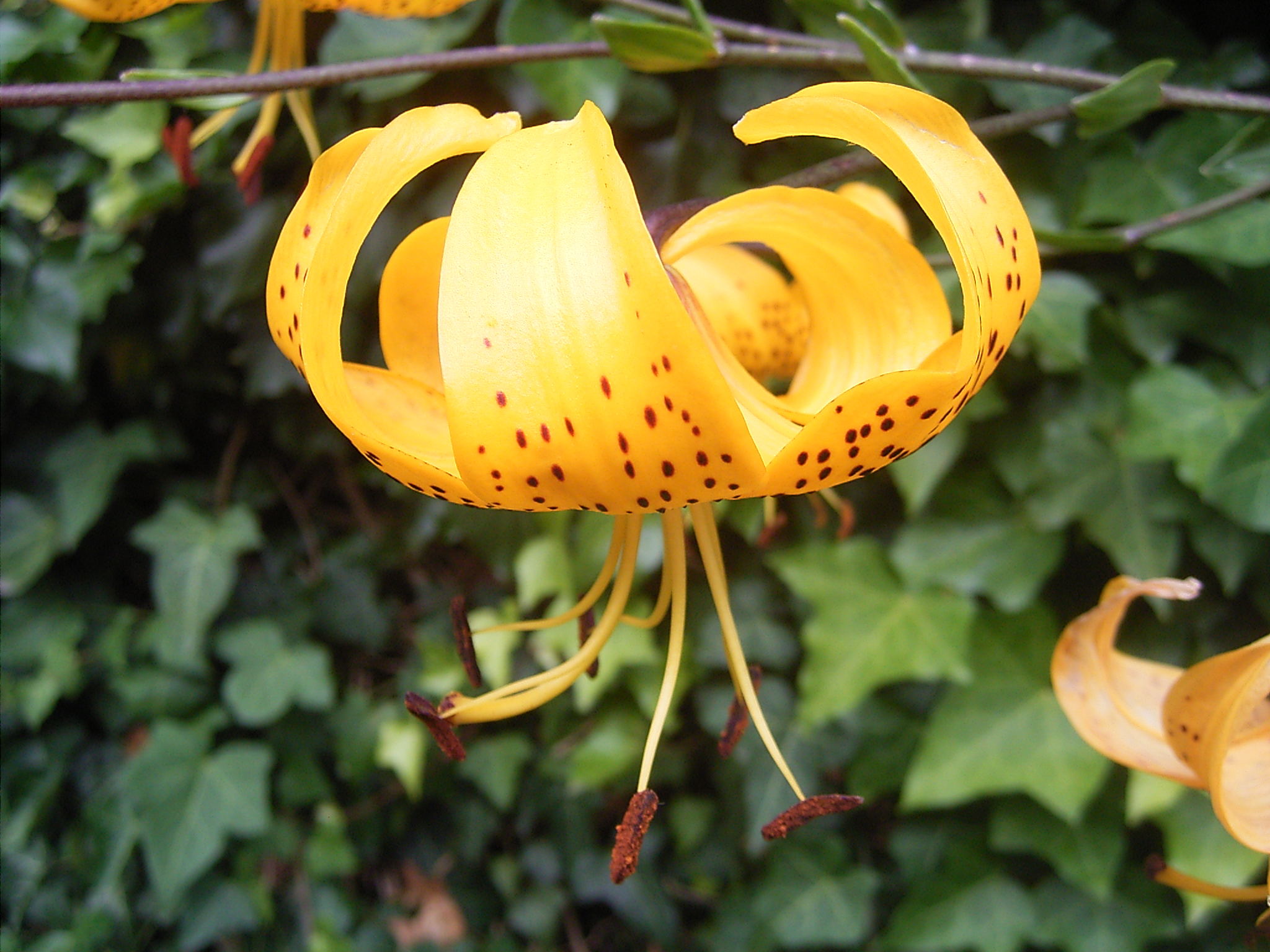 |
| L. leichtlinni. I suppose the hybrid will have more flowers, or something |
 |
| "Forever Susan". If I'm going to break my rules and buy hybrids, why didn't I go for another fun one like this instead of that tedious yellow thing? Perhaps it's because Lilium pyrenaicum ran riot in our Scottish garden that I can get enough of yellow lilies. And there's colombianum, parryi, citronella, hansonii and the yellow martagon |
 |
| L. cernuum. Which I've already got. I really should write things down. It's the Lithium |
The other delivery was a n extremely cute little thing called Pulsatilla caucasica (YELLOW form), Tulbaghia violacea, 10 yellow (I'm obsessed)! Tigridia pavonia, Gladiolus "Charm" and Gladiolus Primulinus "Atom". Shall we have a sneak preview? Yeah? Well you can't because while the Pulsatilla is mentioned on the Web, there are no pics.
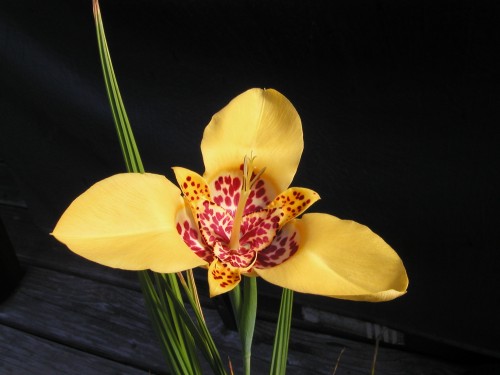 |
| I thought all yellow Tigridias would look a bit classier than a mix |
 |
| Tulbaghia violacea. An odd purchase, I must have been making up the numbers ... |
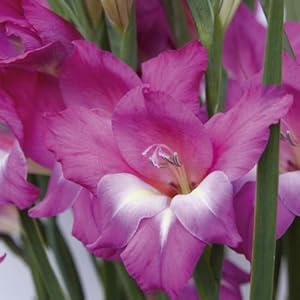 |
| Gladiolus nanus "Charm". Getting a bit too close to the big, blousy hybrids |
 |
| Gladiolus nanus "atom" |
I've been sowing away like mad and am beginning to get the first results with Lathyrus sativus v. azureus, a perennial blue sweet pea, beginning to come through, the tropical looking Mina lobata I showed you last week and Tropaeolums tricolor and "Caribbean Crush", the palest pastel nasturtium imaginable (mind you, a pale nasturtium is a rare beast).
 |
| Lathyrus sativus v. azureus |
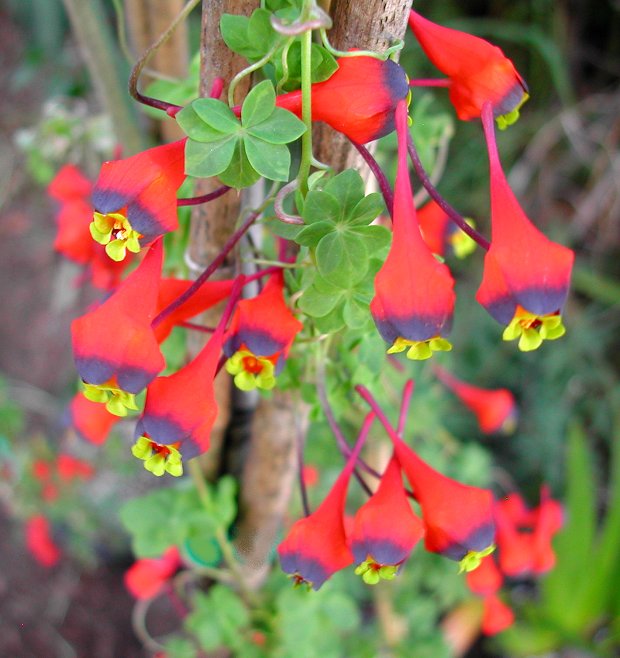 |
| Tropaeolum tricolor |
 |
| T. "Caribbean Crush" |
And last night I brought the sowing kit inside (everyone else was on a Monopoly pub crawl which for a tee-totaller like myself might have been a bit dull). So despite having two mature specimens and a single seedling that escaped the local wildlife, I had another go at Meconopsis betonicifolia (you know what it looks like) and the following:
 |
| Nemesia "Shooting Stars". Looks like an orchid, smells like coconut. Only downer is it's an annual. |
 |
| Absolutely stunning Chilean beauty, Leontochir ovallei |
 |
| Oh God, this is a mouthful: Michauxia Tchihatcheffii |
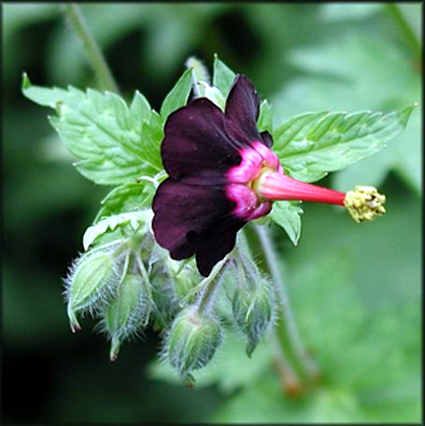 |
| Geranium sinense |
 |
| Impatiens "Red Wine" |
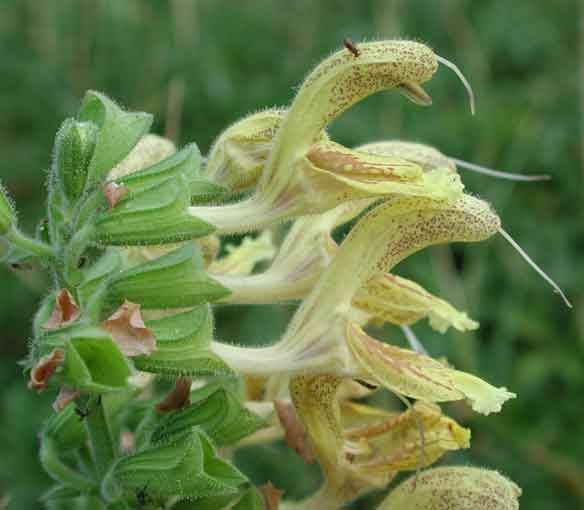 |
| Salvia Glutinosa |
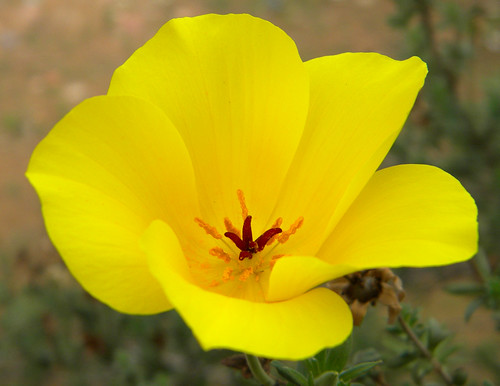 |
| Balbisia peduncularis |
Right, that's enough. I'll leave you with a blue (ok, purple) Rhododendron I'm rather proud of. It's in focus and everything!
Oh and Clematis Jacqeline du Pré too and that's it!
Oh, it's Cardiocrinum giganteum. Happy gardening! Cx































No comments:
Post a Comment